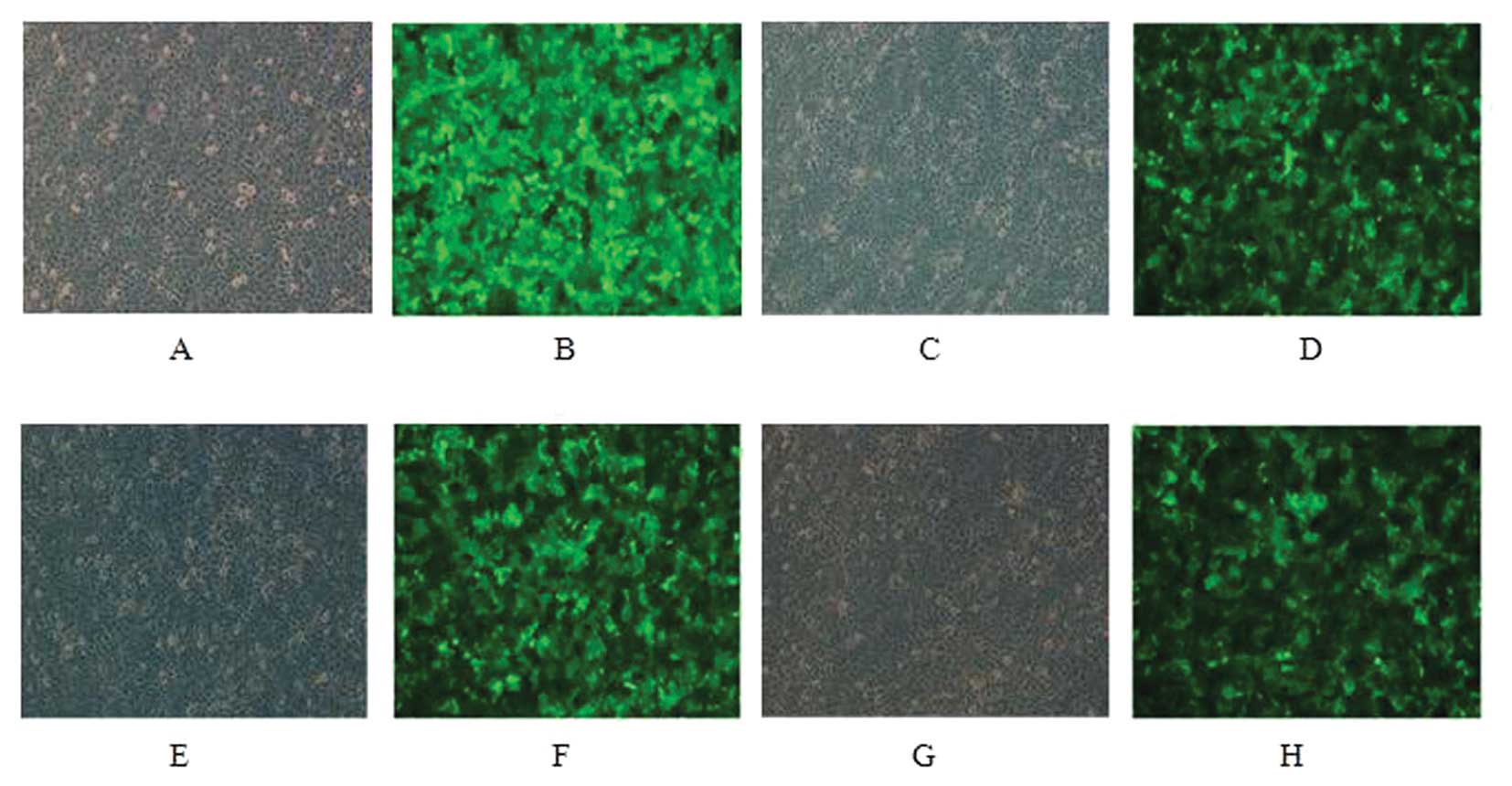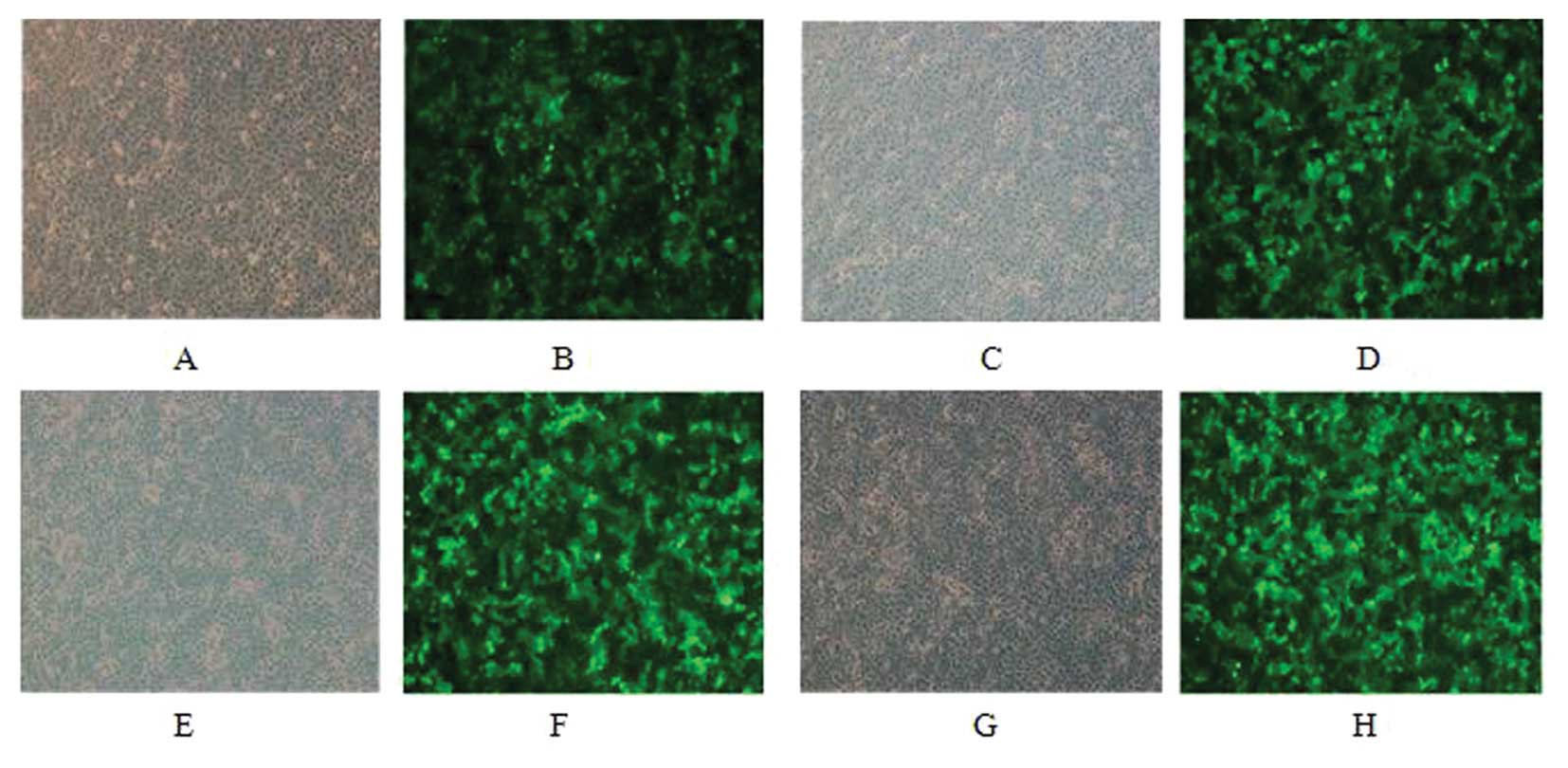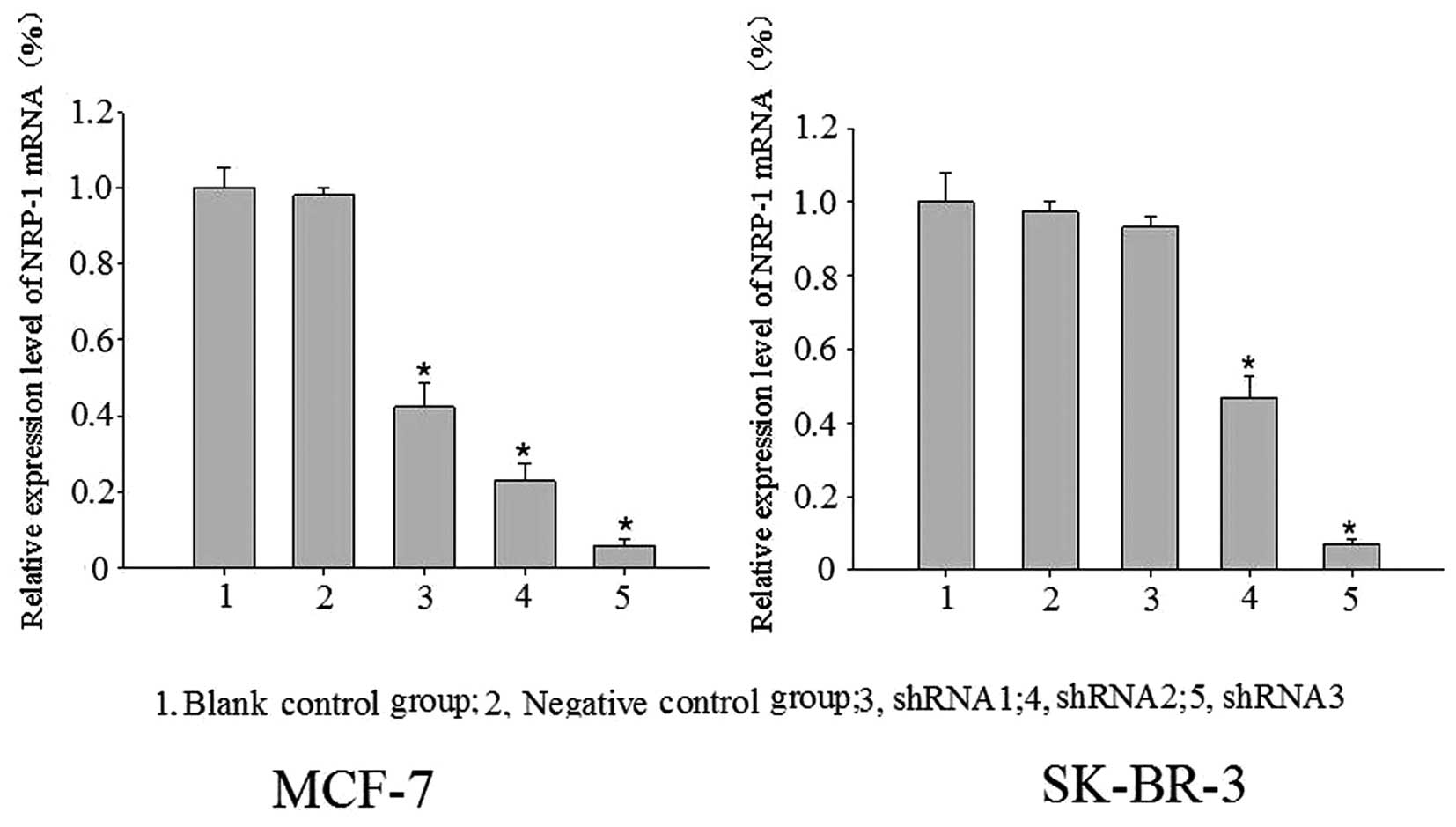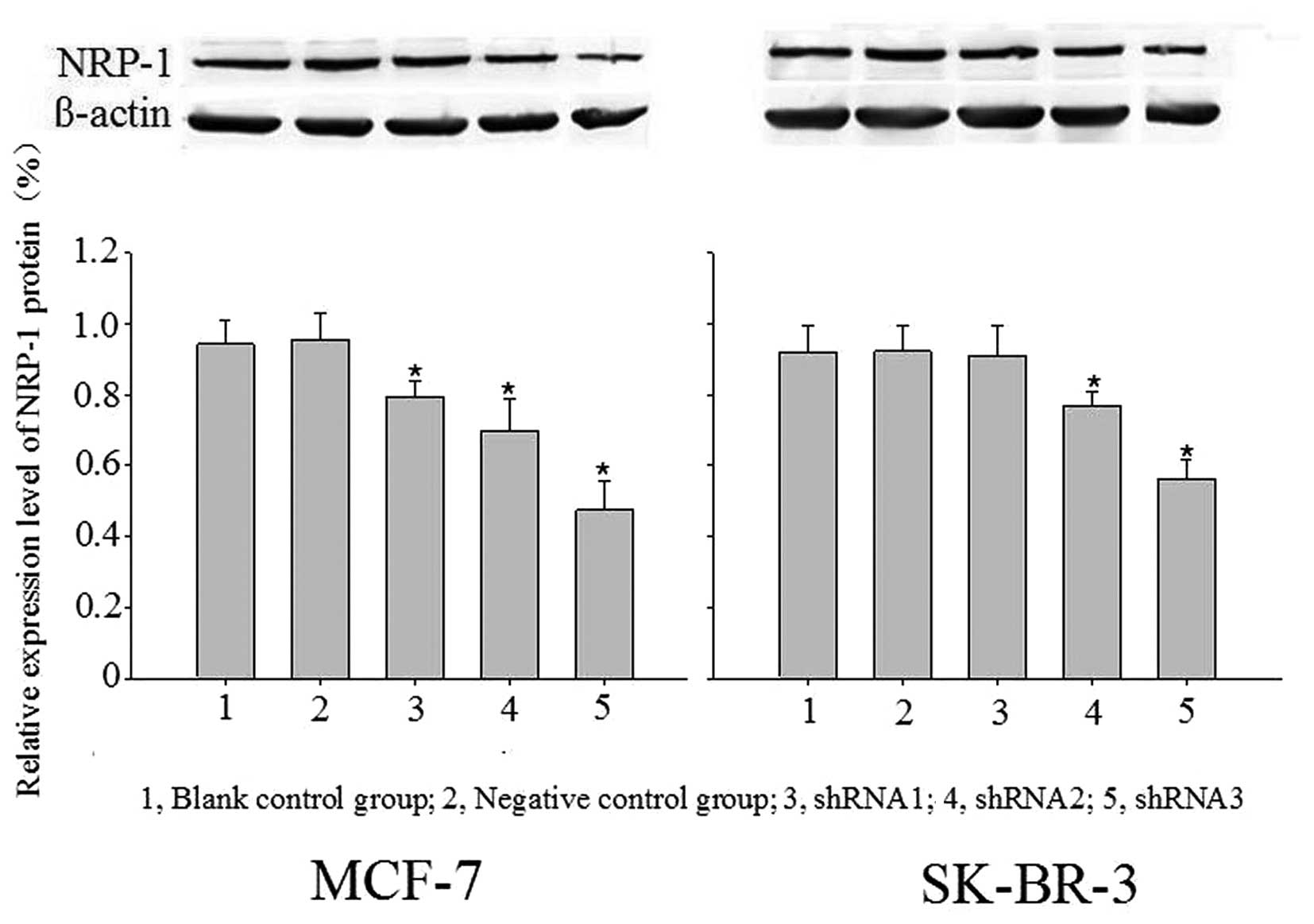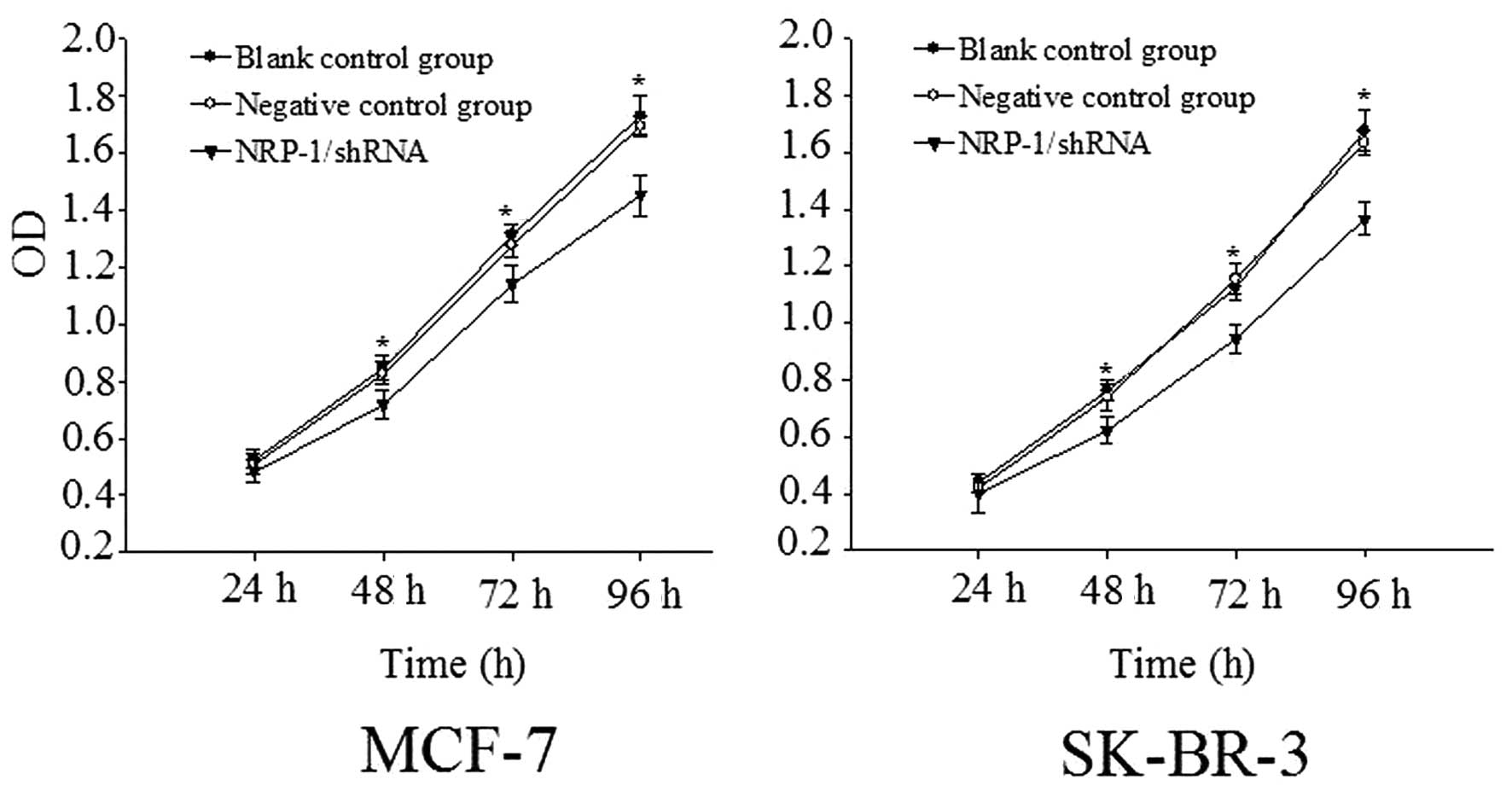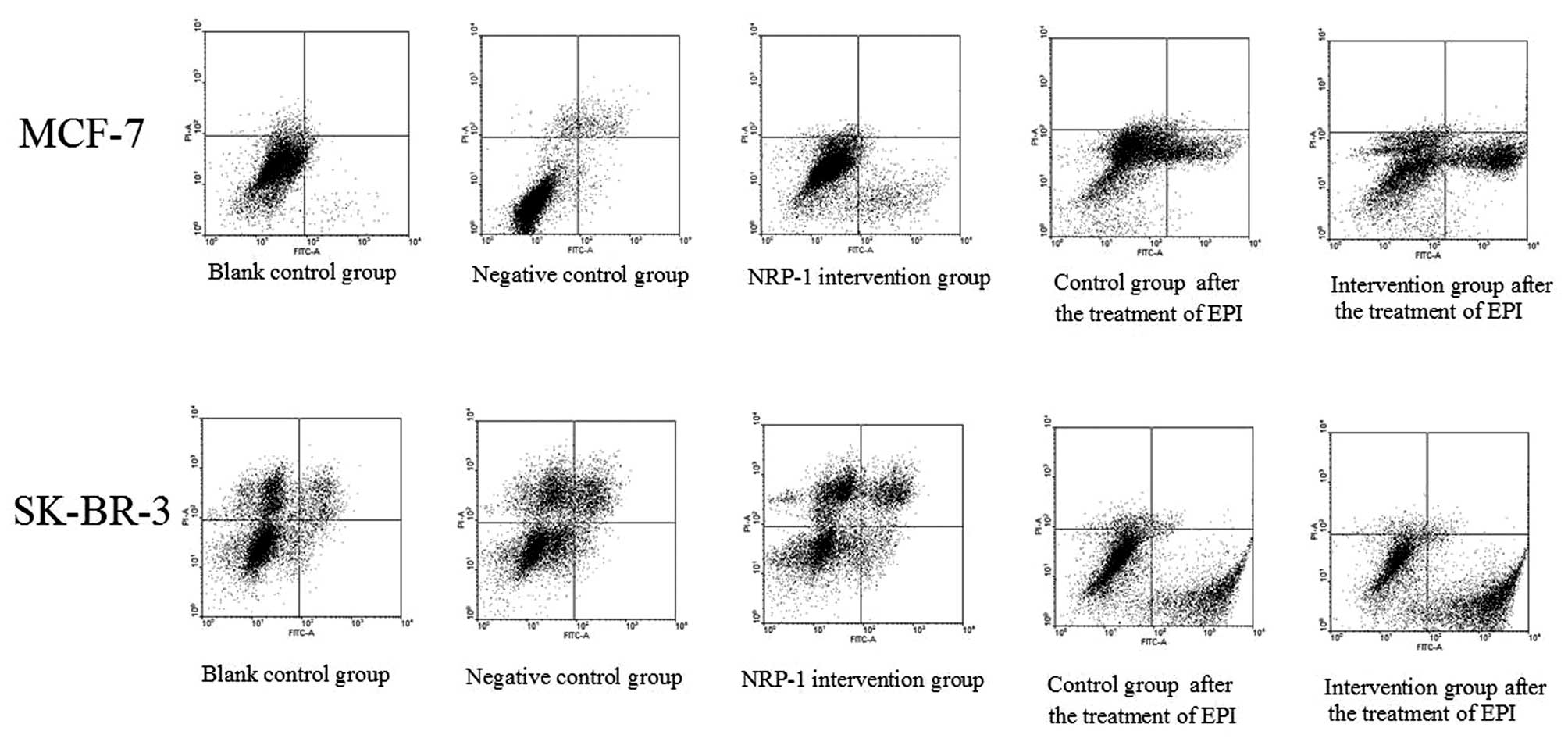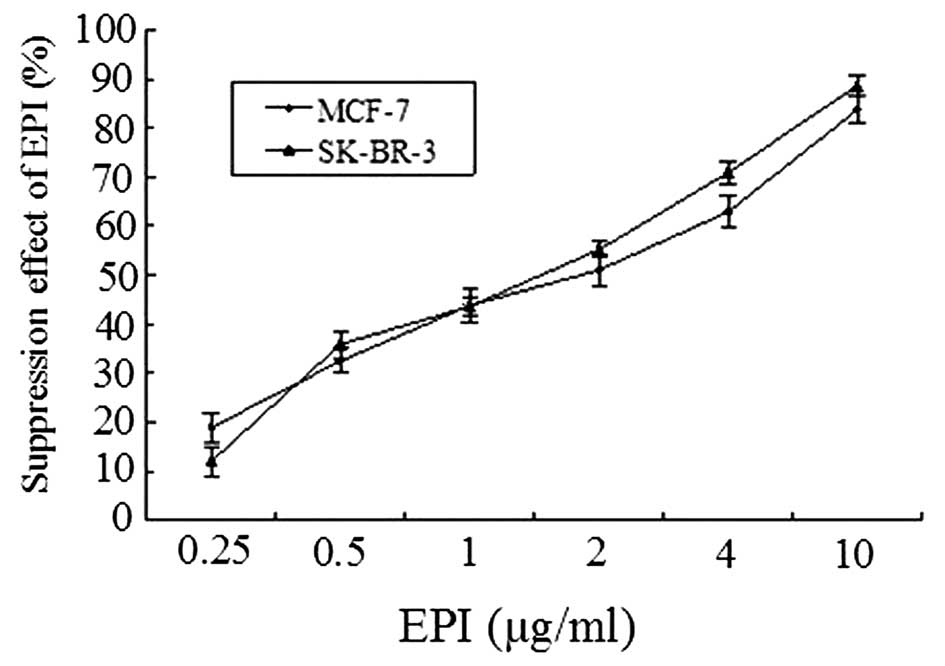Effects of RNA interference-mediated NRP-1 silencing on the proliferation and apoptosis of breast cancer cells
- Authors:
- Published online on: March 3, 2015 https://doi.org/10.3892/mmr.2015.3405
- Pages: 513-519
Metrics: Total
Views: 0 (Spandidos Publications: | PMC Statistics: )
Total PDF Downloads: 0 (Spandidos Publications: | PMC Statistics: )
Abstract
Lentiviral expression vectors carrying human NRP-1 short hairpin RNA (shRNA) were constructed and selected to present highly efficient NRP-1/shRNA interference sequences, in order to investigate the effects of RNA interference (RNAi)‑mediated NRP-1 silencing on the biological activities of breast cancer cells. Three pairs of human NRP-1 targeted specific interference sequences and one pair of non‑specific control sequences were designed, synthesized and subcloned into pLB lentiviral vectors, which were further identified by polymerase chain reaction (PCR) and sequencing. Recombinant and lentiviral packaging plasmids were co-transfected into 293FT cell lines in order to produce lentiviral particles and to infect breast cancer cells with high NRP-1 expression. Flow cytometry was used to sort green fluorescent protein-positive cells. Fluorescence quantitative-reverse transcription-PCR and western blot analysis were employed to identify the interference silencing sequence with the most efficient silencing profile. A cell counting kit-8 assay and an Annexin V-propidium iodide method in combination with flow cytometry were used to examine the effects of RNA interference-mediated NRP-1 gene silencing on cell proliferation, apoptosis and sensitivity to chemotherapy. The recombinant lentiviral plasmid pLB-NRP-1/shRNA was constructed successfully, as confirmed by PCR and sequencing. After the infection of recombinant lentiviral plasmids, the expression profiles of NRP-1 mRNA, and proteins of MCF-7 and SK-BR-3 cell-specific interference group (pLB-NRP-1/shRNA3) were significantly lower than that of the control group (P<0.05). Compared with the control group, the MCF-7 and SK-BR-3 cell-specific interference group (pLB‑NRP-1/shRNA3) showed lower optical density values and higher apoptotic rates at 48, 72 and 96 h; these differences were statistically significant (P<0.05). EPI administration resulted in increased apoptosis in the MCF-7 and SK-BR-3 cell-specific interference groups compared with the control group (P<0.05). Lentiviral vectors encoding the human NRP-1 gene were constructed successfully and highly efficient NRP-1/shRNA interference sequences were selected. Furthermore, RNA interference (RNAi)-mediated NRP-1 silencing may induce proliferation suppression, apoptosis promotion, as well as enhanced sensitivity to chemotherapeutic agents.



